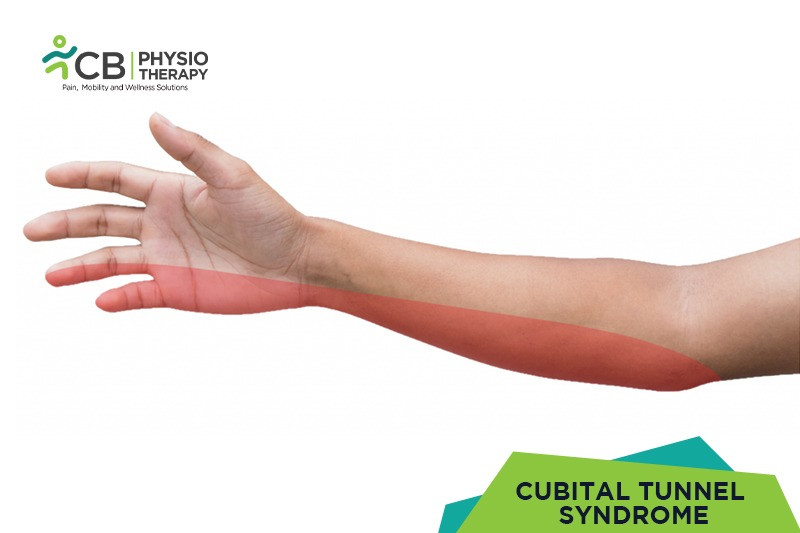
Cubital tunnel syndrome or ulnar neuritis or ulnar nerve compression occurs when the ulnar nerve, which passes through the cubital tunnel on the inside of the elbow, is injured, compressed, and becomes inflamed, and irritated. The cubital tunnel is the space behind the medial epicondyle, where the ulnar nerve runs.
In many cases, the cause is not known. Cubital tunnel syndrome can occur due to the following reasons:
The symptoms may vary from person to person, but the most common symptoms of cubital tunnel syndrome may include:
Pathology
Cubital tunnel syndrome is neuropathy of the ulnar nerve which causes shooting pain and numbness along the medial side of the forearm and the medial half of the 4th digit and the 5th digit, caused by compression of the ulnar nerve at the elbow region.
Nerve conduction test:
This test is used to find out the conduction of the signal down the nerve to check if there is a compression of the nerve.
Electromyogram (EMG:
This test checks muscle and nerve function. It may be also used to test the forearm muscles controlled by the ulnar nerve. Any problems in the muscles indicate that there is a problem with the ulnar nerve.
X-ray:
X-ray helps to check the bones of the elbow and see if there is any bone spur or arthritis in the elbow.
Medication: Non-steroidal anti-inflammatory medications (NSAIDs), Anti-inflammatory medicines - ibuprofen or naproxen, steroid injections.
NOTE: Medication should not be taken without the doctor's prescription.
Non- surgical treatment
Cubital tunnel syndrome can be treated by non-surgical treatment with rest and medicines to help with pain and inflammation. Activities that aggravate the condition, such as bending the elbow should be stopped. Exercises may help too.
Surgical Treatment
If Non-surgical treatments are failed surgical treatment is the other option. The surgery may involve removing a small part of the bone or releasing the nerve or moving the nerve to the front part of the elbow to relieve the pressure. Surgical treatment includes the following procedures:
Physiotherapy is one of the most common forms of treatment for cubital tunnel syndrome treatment. It helps to relieve pressure off of the elbow and ensure light movements to prevent any strain to it and is usually recommended after surgery. The physiotherapist recommends exercises and techniques to reduce the symptoms of cubital tunnel syndrome and helps to develop a treatment plan that meets the specific needs.
Immobilization:
An Elbow brace or splint is worn at night to reduce irritation and limit movement. For protection, an elbow pad can be used to protect against chronic irritation from hard surfaces.
Apply cold compresses to the affected area for 5-10 minutes, multiple times daily. Cold packs can help relieve pain in the affected area and also enhance the process of healing.
Heat therapy compresses help improve blood flow in the affected area, and thus alleviate pain and speed up recovery.
Massage therapy
Massage therapy can be effective for cubital tunnel syndrome, it may help in managing the symptoms of the syndrome.
Manipulation
Joint manipulation helps to manage and alleviate symptoms.
Range of motion exercises
Range of motion exercises help reduce the pressure and improve elbow function. The patient is asked to relax the arm while not using it.
Light free weight exercises
Flexion and extension of the elbow with weight in hand and other simple elbow range of motion exercises with dumbbells and weights.
Nerve gliding exercises
Nerve gliding techniques are the most commonly recommended exercises for cubital tunnel syndrome. This technique helps to stretch the ulnar nerve and also encourages movement.
Select your City to find & connect with our experts regarding Physiotherapy for Cubital Tunnel Syndrome